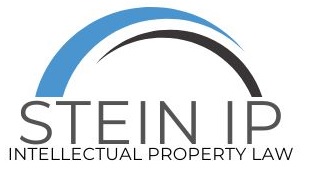- HOME
- > Blog Main Page
- > Patents
- > EXTENDED AGAIN! The AFCP 2.0 Program
EXTENDED AGAIN! The AFCP 2.0 Program
By Nicole Anne Hia
The After Final Consideration Pilot 2.0 (AFCP 2.0) has yet again been extended by the U.S. Patent and Trademark Office (USPTO) until September 30, 2020. The main objective of this program is to help promote compact prosecution and bolster collaboration between examiners and stakeholders.
How did the AFCP 2.0 start?
In 2012, the After Final Consideration Pilot (AFCP) was first introduced as an attempt to better facilitate the progression of cases nearing completion, without having to file for a Request for Continued Examination (RCE). This program allowed for the applicant to engage with the examiner beyond what would be allowed previously under the rules, should the examiner decide that the response could be fully considered within three hours for plant and utility applications, or within an hour for design patent applications.
However, the first version did not garner much positive response and proved to be not as effective in achieving their goals as initially expected. As such, in May 2013, the AFCP 2.0 took over the original pilot as its successor with some new improvements, and was originally scheduled to run only through September 30, 2013.
AFCP vs. AFCP 2.0: What’s the difference?
According to a notice published by the USPTO in the Volume 78, Issue 96 of the Federal Register (78 FR 29117), there are three main differences between the original AFCP and AFCP 2.0:
- To participate in the latter, an applicant must submit a request to indicate so.
- A response after final rejection under AFCP 2.0 must include an amendment to at least one independent claim that does not broaden the scope of the independent claim in any aspect.
- If examiner’s review of the response does not result in a determination that all pending claims are in condition for allowance, the examiner will request an interview with the applicant to discuss the response and to provide them with feedback on their findings. This is indicated in request form for the AFCP 2.0 (PTO/SB/434), which includes a statement that the applicant will be willing to participate in an interview initiated by the examiner.
So, how does the AFCP 2.0 work?
To be eligible, the application must be a utility, design, or plant non-provisional application, and must have received a final rejection. This includes national stage and continuing applications, but does not extend to reissue and reexamination ones.
Thereafter, an applicant must file a response under 37 CFR §1.116, comprising a request for consideration under the AFCP 2.0 and an amendment to at least one independent claim that does not broaden the scope of the independent claim in any aspect. An applicant may only file one request for consideration under the program, per outstanding final rejection.
The applicant will then receive a specialized AFCP 2.0 form (PTO-2323) in response. This form will act as a customized communication channel, indicating the submission’s status and if applicable, may also come with a summary of the interview. It is designed to show more clearly the examiner’s treatment of the submission.
Until when is the AFCP 2.0 available?
As mentioned earlier, the AFCP 2.0 has been extended to run until September 30, 2020. This means that any request to consider a response after final rejection under the program must be filed on or before the specified date.
Since its launch, the AFCP 2.0 has received generally positive feedback from applicants and patent practitioners. Even if unsuccessful, applicants can also take this opportunity to better understand how they can present stronger amendments in subsequent filings for RCE.
That being said, as always, the option to request an interview with the examiner under MPEP 713, is still available to you irrespective of whether the submission was considered under AFCP 2.0.

TAGS:
RECENT POSTS
